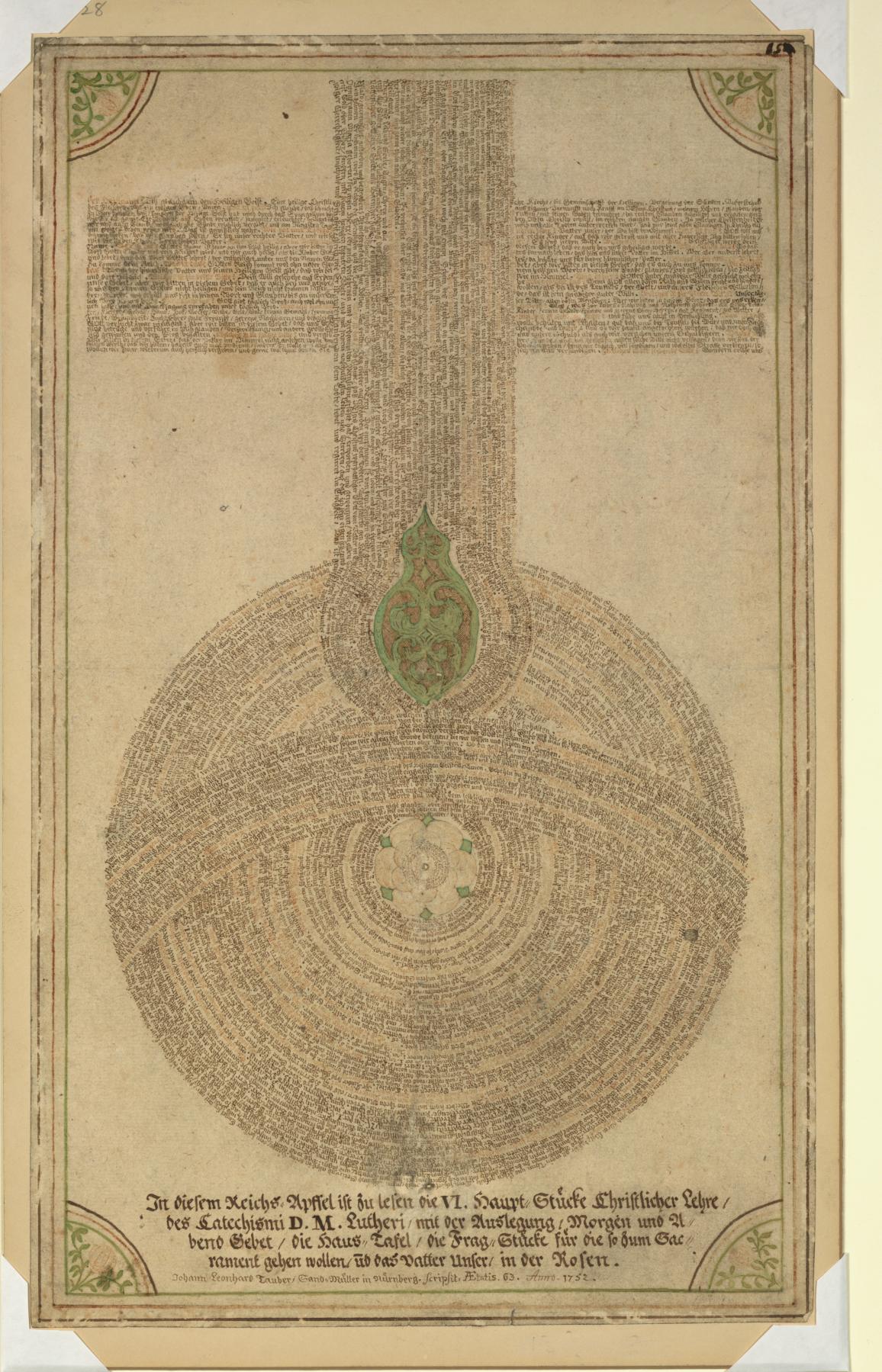Single Leaf with Lutheran Devotional Design
(Manuscripts and Rare Books)
This leaf, which appears to have been created as a singular work rather than part of a book, was designed and made by Johann Leonhard Tauber in 1752. Tauber, who identifies himself as a 63-year-old gravel-crusher in Nuremberg, Germany, "drew" using lines of texts of Christian doctrine, Martin Luther's catechism, and daily prayers. He identifies the ultimate design as the "Reichs Apffel," or "Orb of the Empire." Written in the most minute script, with the smallest text in the center of the flower virtually illegible to the naked eye, this work would have been a painstaking act of devotion.
Provenance
Provenance (from the French provenir, 'to come from/forth') is the chronology of the ownership, custody, or location of a historical object. Learn more about provenance at the Walters.
Created by Johann Leonhard Tauber, Nuremberg, Germany, 1752; purchased by Henry Walters, Baltimore, 1901; by bequest to Walters Art Museum, 1931.
Exhibitions
| 2017 | Uncertain Times: Martin Luther's Remedies for the Soul. The Walters Art Museum, Baltimore. |
| 2009 | Shrunken Treasures: Miniaturization in Books and Art. The Walters Art Museum, Baltimore. |
Geographies
Germany, Nuremberg (Place of Origin)
Measurements
Overall H: 13 9/16 x W: 8 1/4 in. (34.5 x 21 cm); Folio H: 13 9/16 × W: 8 1/4 in. (34.4 × 21 cm); Framed H: 21 3/4 × W: 16 3/4 × D: 1 3/8 in. (55.25 × 42.55 × 3.49 cm)
Credit Line
Acquired by Henry Walters, 1901
Location in Museum
Not on view
Accession Number
In libraries, galleries, museums, and archives, an accession number is a unique identifier assigned to each object in the collection.
In libraries, galleries, museums, and archives, an accession number is a unique identifier assigned to each object in the collection.
W.728


